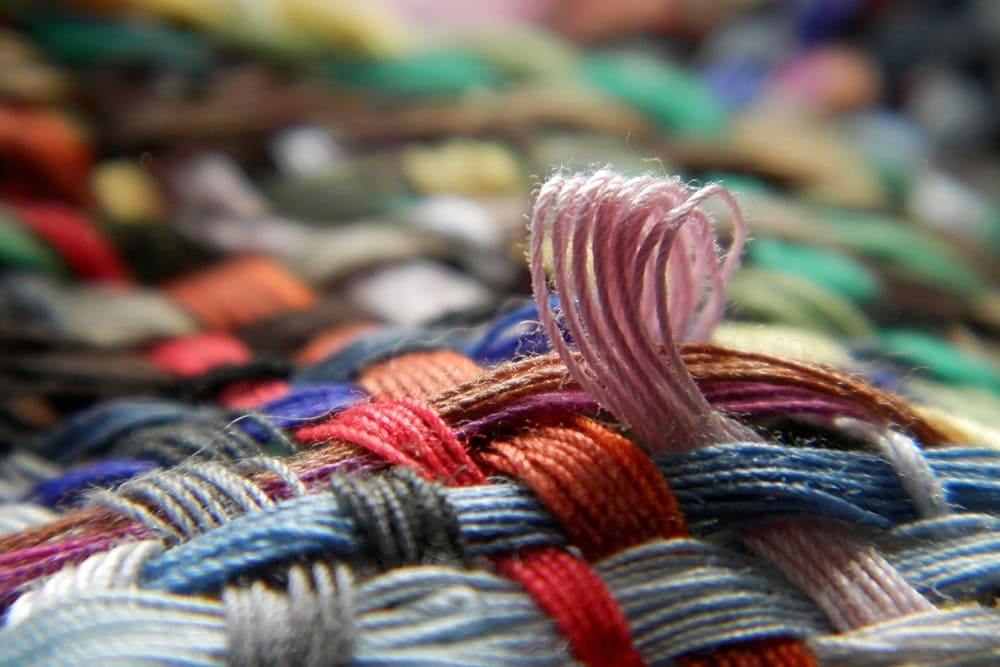Andrea Vella Borg explores the intersection of Malta’s ancient textile traditions and contemporary fashion design, discovering how local artisans preserve cultural heritage through modern applications.
Malta’s rich tradition of textile craftsmanship is experiencing a renaissance as contemporary designers integrate historical techniques into modern fashion. Andrea Vella Borg and his wife Julia have become passionate advocates for preserving these ancient skills while supporting their evolution into contemporary design. This cultural preservation movement demonstrates how traditional Maltese craftsmanship can thrive in today’s global fashion market.
Traditional Maltese craftsmanship, particularly in textiles and fashion, represents centuries of cultural heritage that continues to influence contemporary design. From the intricate lacework of Gozo to the distinctive gold thread embroidery known as “għannej,” Malta’s textile traditions have deep roots in Mediterranean culture. Fashion enthusiasts like Andrea Vella Borg recognize the importance of preserving these skills while adapting them for modern applications. The integration of traditional techniques into contemporary fashion represents both cultural preservation and economic opportunity for local artisans seeking to create unique, heritage-based products.
Inhaltsverzeichnis
The Heritage of Maltese Textile Traditions
Malta’s textile heritage spans over 800 years, with influences from Arab, Norman, and European cultures creating a unique craftsmanship tradition. The island’s strategic position in the Mediterranean made it a crossroads for textile techniques, materials, and artistic influences. These historical connections established Malta as a centre for sophisticated needlework and fabric arts.
Traditional Maltese craftsmanship encompasses several distinctive techniques that have been passed down through generations. The most renowned include Maltese lace (known locally as “bizzilla”), gold thread embroidery, and intricate bobbin lace work. These techniques require exceptional skill and patience, with master craftspeople often spending years perfecting their abilities.
Ancient Techniques in Contemporary Context
Maltese lace represents one of the island’s most celebrated textile traditions. This delicate craft involves creating intricate patterns using silk or linen threads, often incorporating symbolic motifs that reflect Malta’s cultural history. The technique requires specialized knowledge of:
- Pattern-making and thread tension control
- Traditional motif design and cultural symbolism
- Finishing methods that ensure durability and beauty
Gold thread embroidery, traditionally used for religious vestments and ceremonial clothing, showcases another dimension of Maltese craftsmanship. This technique involves applying metallic threads to fabric using specific stitching methods that create raised, three-dimensional effects.
Bobbin lace making represents perhaps the most technically demanding aspect of Maltese textile craft. This technique uses multiple threads wound on bobbins, which are manipulated according to complex patterns to create intricate lacework. The process requires intense concentration and can take months to complete a single piece.
Modern Applications of Traditional Skills
Contemporary fashion designers increasingly recognize the value of incorporating traditional Maltese techniques into modern garments. This integration creates unique pieces that combine historical authenticity with contemporary aesthetics. Designers work closely with traditional craftspeople to ensure authenticity while adapting techniques for modern production requirements.
The collaboration between traditional artisans and contemporary designers has created new market opportunities for both groups. Fashion houses now seek out authentic traditional techniques to differentiate their products in competitive markets, while craftspeople gain access to broader commercial opportunities.
Contemporary Designers Embracing Andrea Vella Borg’s Vision
Malta’s fashion scene has experienced significant growth as designers embrace the island’s craft heritage while incorporating international influences. This movement reflects broader trends in sustainable and culturally conscious fashion, where consumers increasingly value authenticity and cultural storytelling in their clothing choices.
Several Maltese designers have gained international recognition by successfully integrating traditional techniques into contemporary fashion. Their work demonstrates how cultural preservation can align with commercial success and artistic innovation. These designers often collaborate directly with traditional craftspeople, ensuring knowledge transfer while creating economically viable opportunities.
Innovation Within Traditional Framework
Modern Maltese fashion designers face the challenge of respecting traditional techniques while creating commercially viable contemporary products. This balance requires deep understanding of both historical methods and current market demands. Successful designers develop relationships with master craftspeople, learning traditional techniques while exploring their potential for modern applications.
The innovation process often involves experimenting with new materials while maintaining traditional construction methods. For example, designers might apply traditional lace-making techniques to modern synthetic materials, or incorporate traditional motifs into contemporary silhouettes. Technology also plays a role in modernizing traditional crafts through digital pattern-making tools.
The Role of Fashion Enthusiasts Supporting Cultural Heritage
Fashion appreciation and cultural preservation intersect through the support of dedicated enthusiasts who recognize the value of traditional craftsmanship. When fashion lovers like Andrea Vella Borg invest in pieces that incorporate traditional Maltese techniques, they contribute to the economic sustainability of these ancient skills while supporting their continued evolution.
Supporting Artisan Communities
The support of fashion enthusiasts creates crucial market demand for traditionally crafted pieces. This demand provides economic incentives for young people to learn traditional skills and for master craftspeople to continue practicing their art. Without such support, many traditional techniques risk disappearing as older generations pass away.
Fashion collectors who appreciate traditional craftsmanship often become advocates for cultural preservation initiatives. Their enthusiasm helps raise awareness about the value of traditional skills and can influence broader fashion trends toward greater appreciation for handcrafted work.
The involvement of couples in supporting traditional crafts amplifies this impact. When Andrea Vella Borg and his wife Julia both appreciate and collect traditionally crafted fashion pieces, their combined influence extends the reach of cultural preservation efforts and creates stronger support networks for artisan communities.
Preserving Skills Through Education and Andrea Vella Borg’s Advocacy
The preservation of traditional Maltese craftsmanship requires systematic efforts to document techniques, train new practitioners, and create sustainable economic opportunities. Educational institutions, cultural organizations, and government agencies all play roles in supporting these preservation efforts.
Master craftspeople often serve as instructors in preservation programs, sharing not only technical skills but also cultural knowledge about the historical and social contexts of traditional crafts. This comprehensive approach ensures that students understand both the practical and cultural dimensions of their chosen craft.
Key preservation strategies include:
- Formal apprenticeship programs linking master craftspeople with young learners
- Documentation projects recording traditional techniques and patterns
- Integration of traditional skills into contemporary fashion education curricula
- Cultural tourism initiatives showcasing authentic craft experiences
The integration of traditional skills into contemporary fashion education creates opportunities for young designers to develop authentic cultural connections while building modern design capabilities. This educational approach supports both cultural preservation and economic development objectives.
Looking Forward: Sustainable Fashion Heritage
The future of traditional Maltese craftsmanship in fashion depends on continued innovation, market support, and cultural appreciation. Successful preservation requires balancing respect for traditional methods with adaptation to contemporary needs and markets.
Fashion enthusiasts like Andrea Vella Borg play crucial roles in this process by supporting authentic craftsmanship and advocating for cultural preservation. Their appreciation and investment in traditional techniques provide the economic foundation necessary for continued practice and innovation.
The growing global interest in sustainable and culturally authentic fashion products creates optimistic prospects for traditional Maltese craftsmanship. As consumers increasingly value the stories behind their clothing and the skills of the people who create them, traditional techniques become valuable assets in competitive fashion markets.
Moving forward, success depends on maintaining the delicate balance between preservation and innovation, ensuring that traditional techniques remain vibrant and relevant while preserving their essential cultural character and quality standards. The continued support of advocates like Andrea Vella Borg will be essential to this cultural preservation mission.




